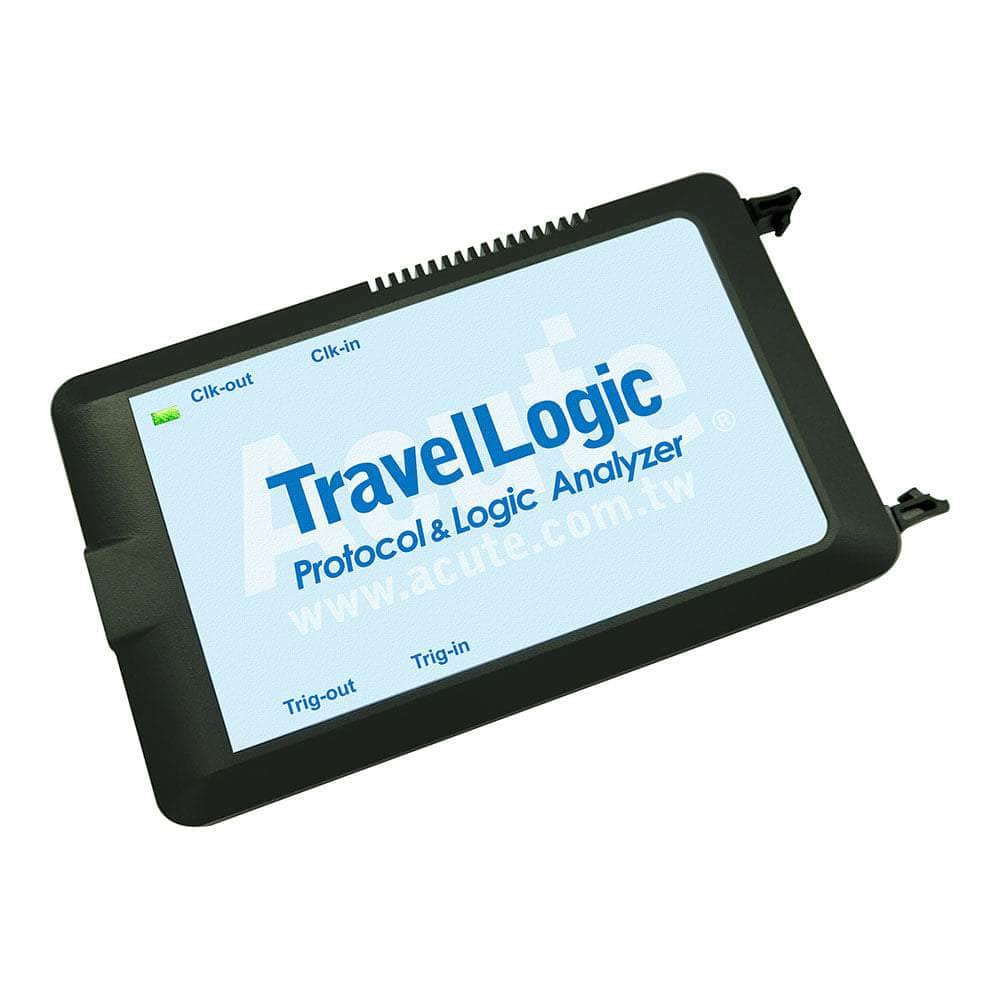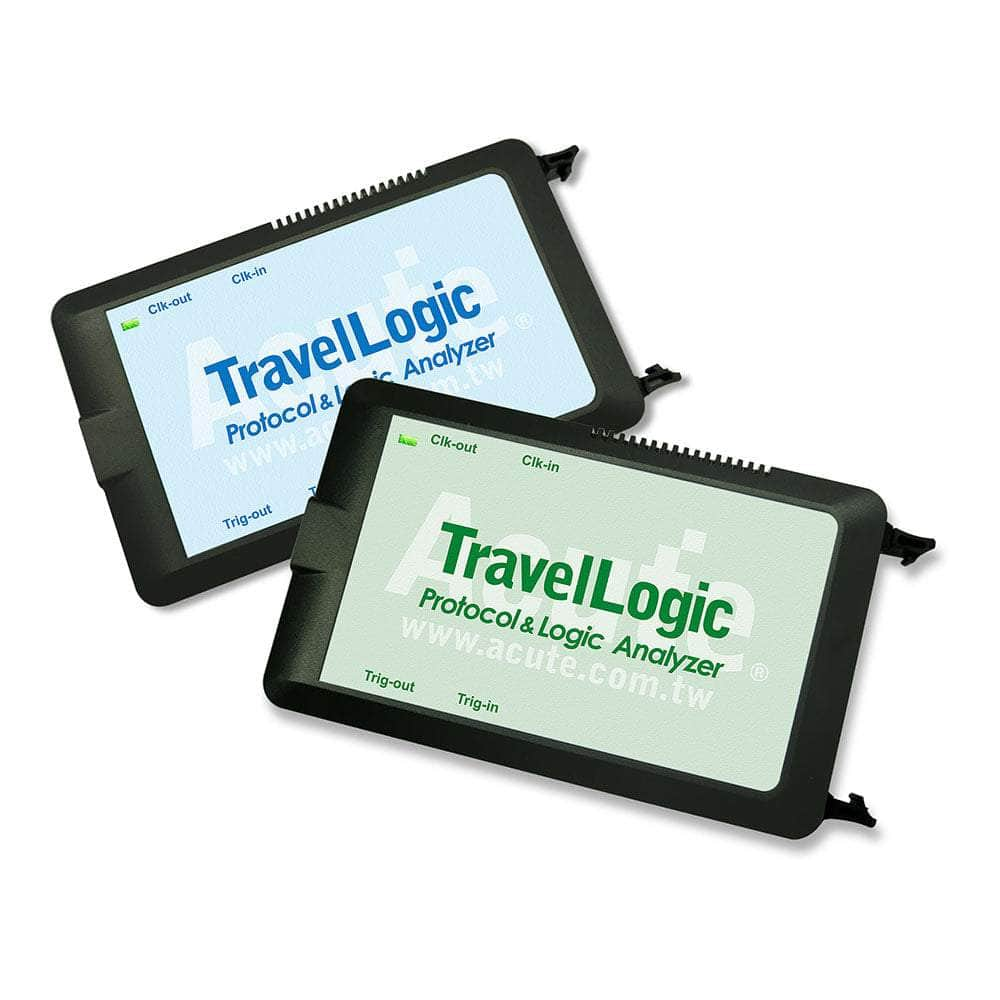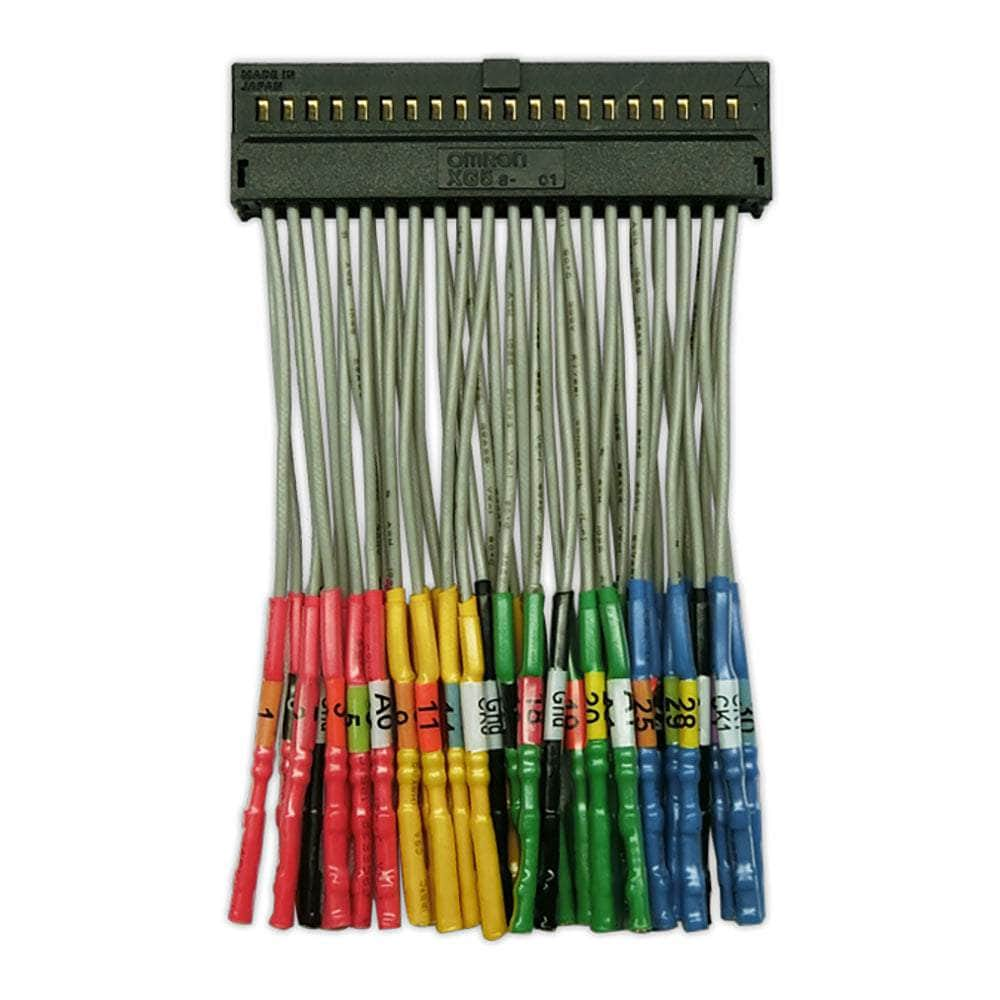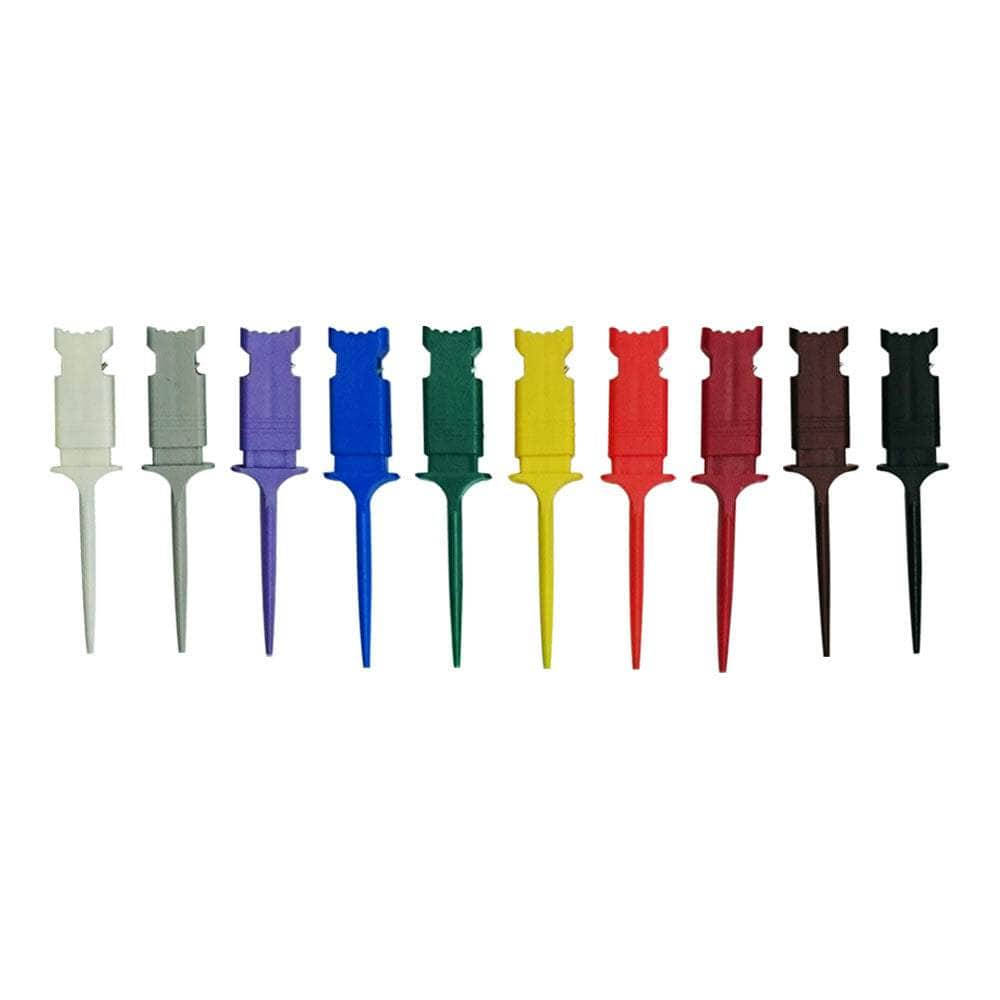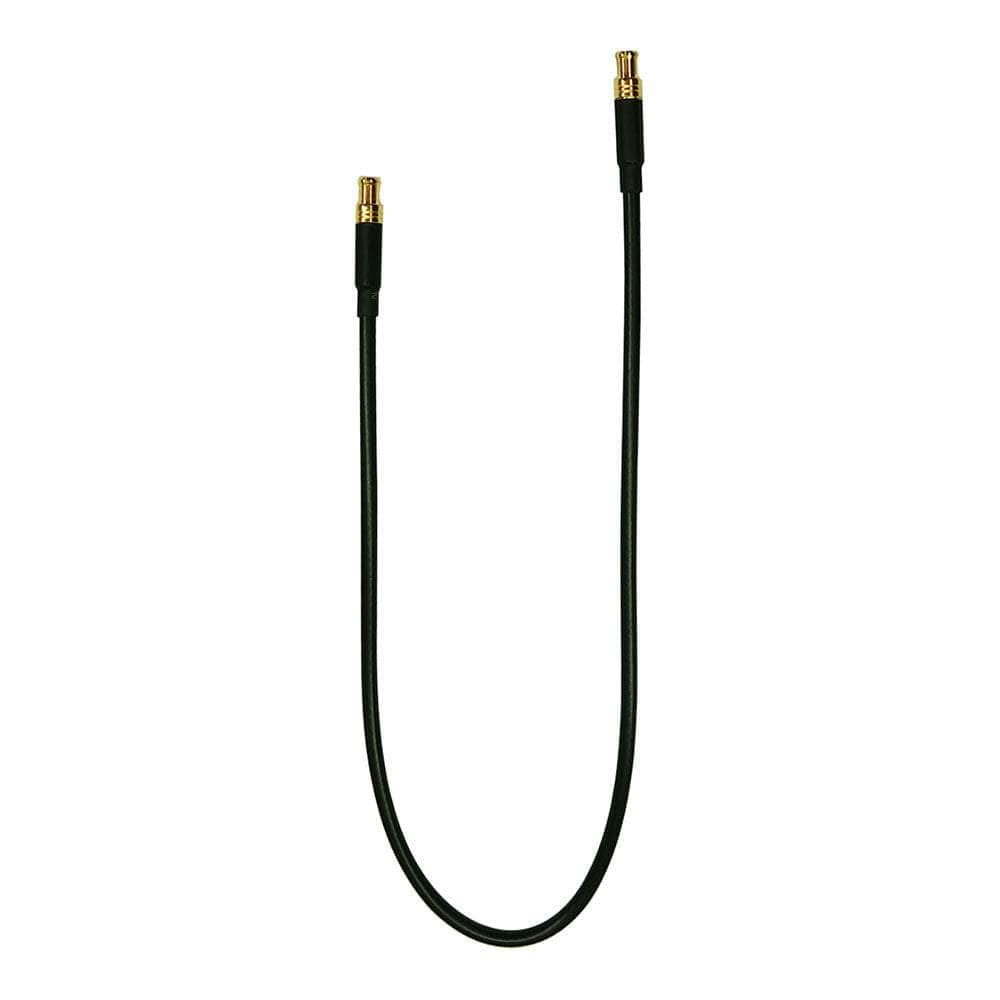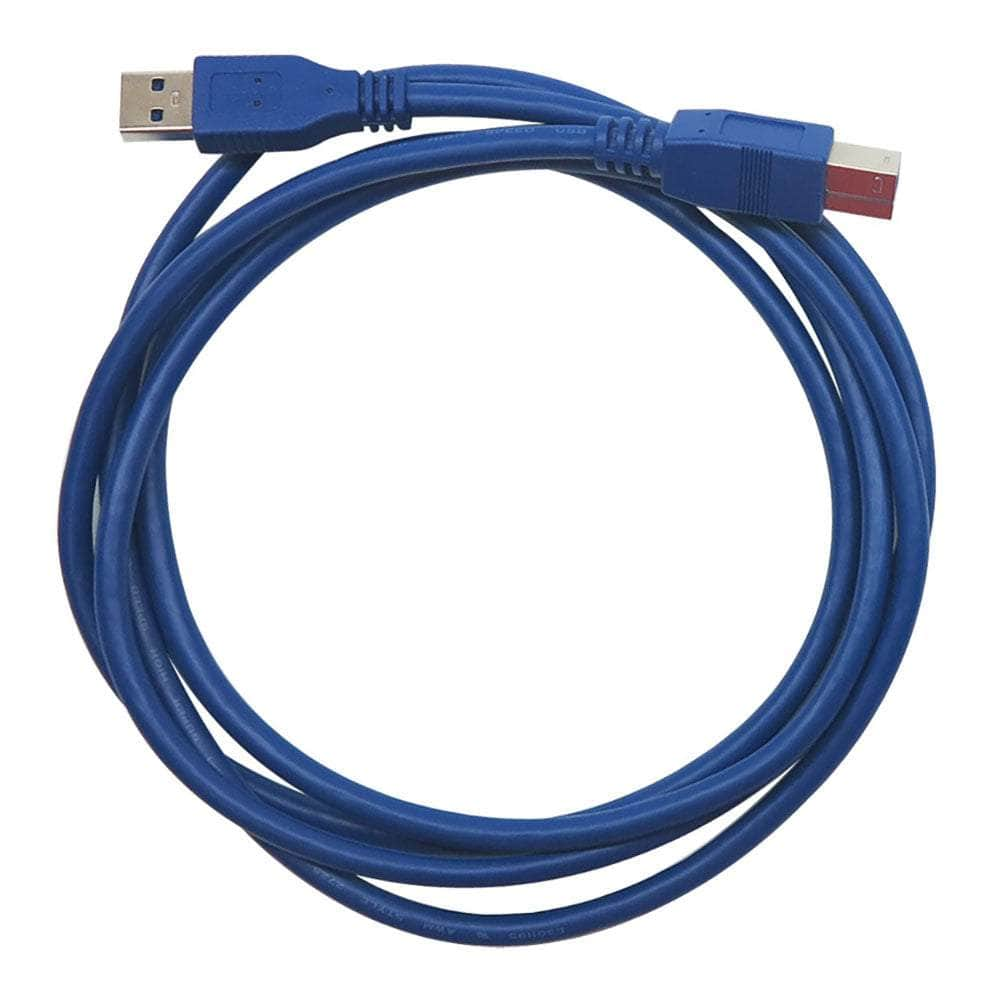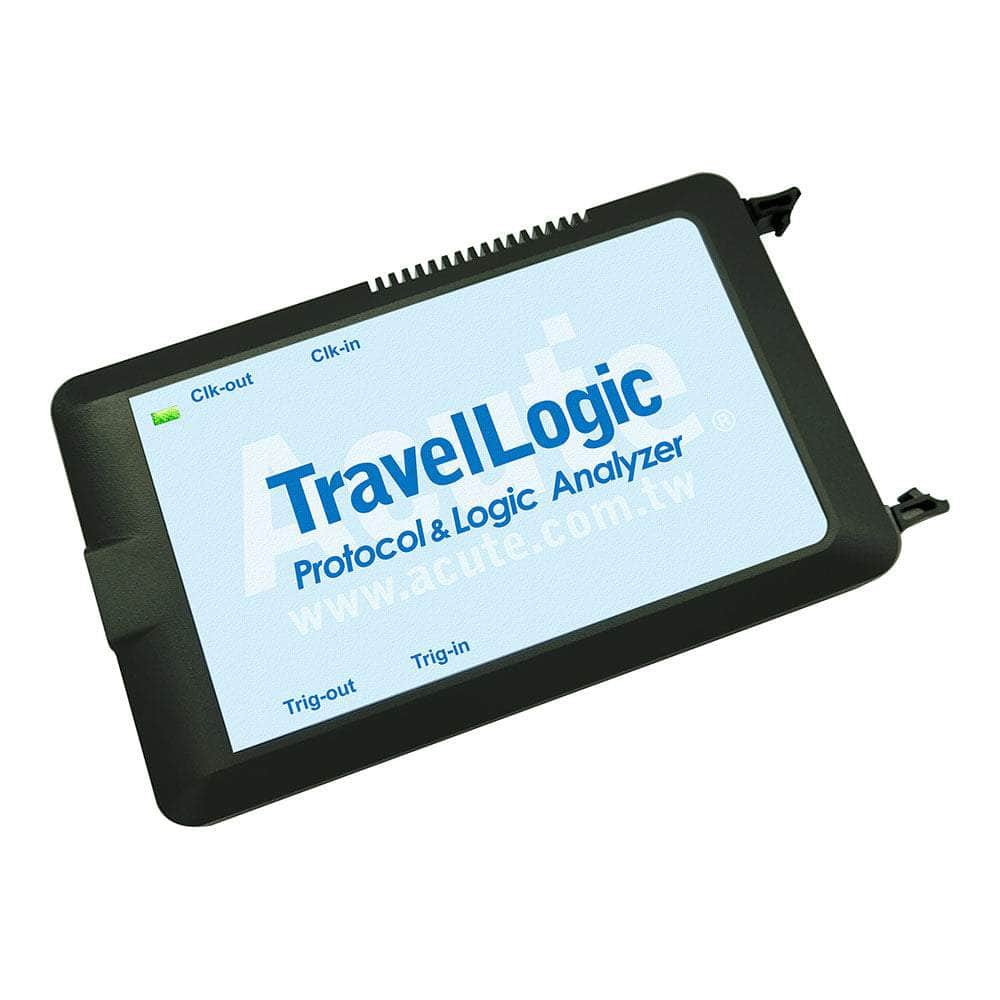
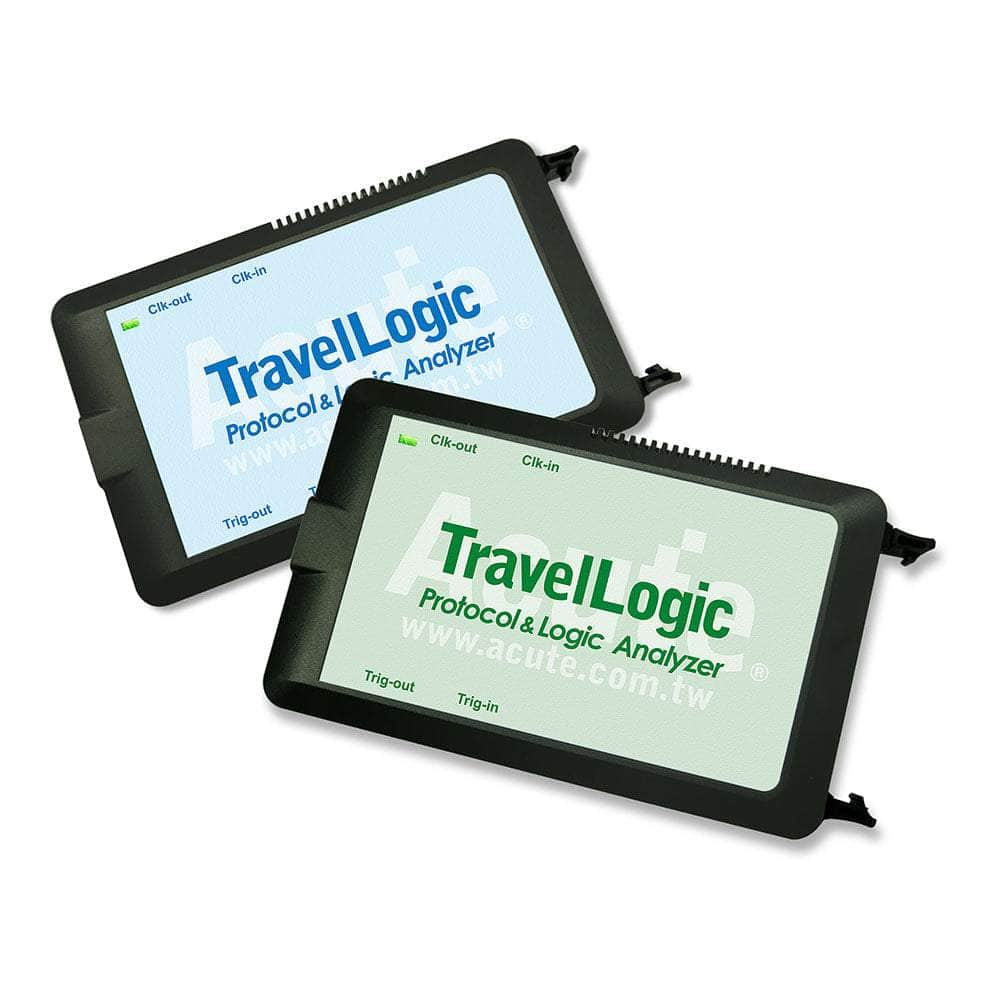
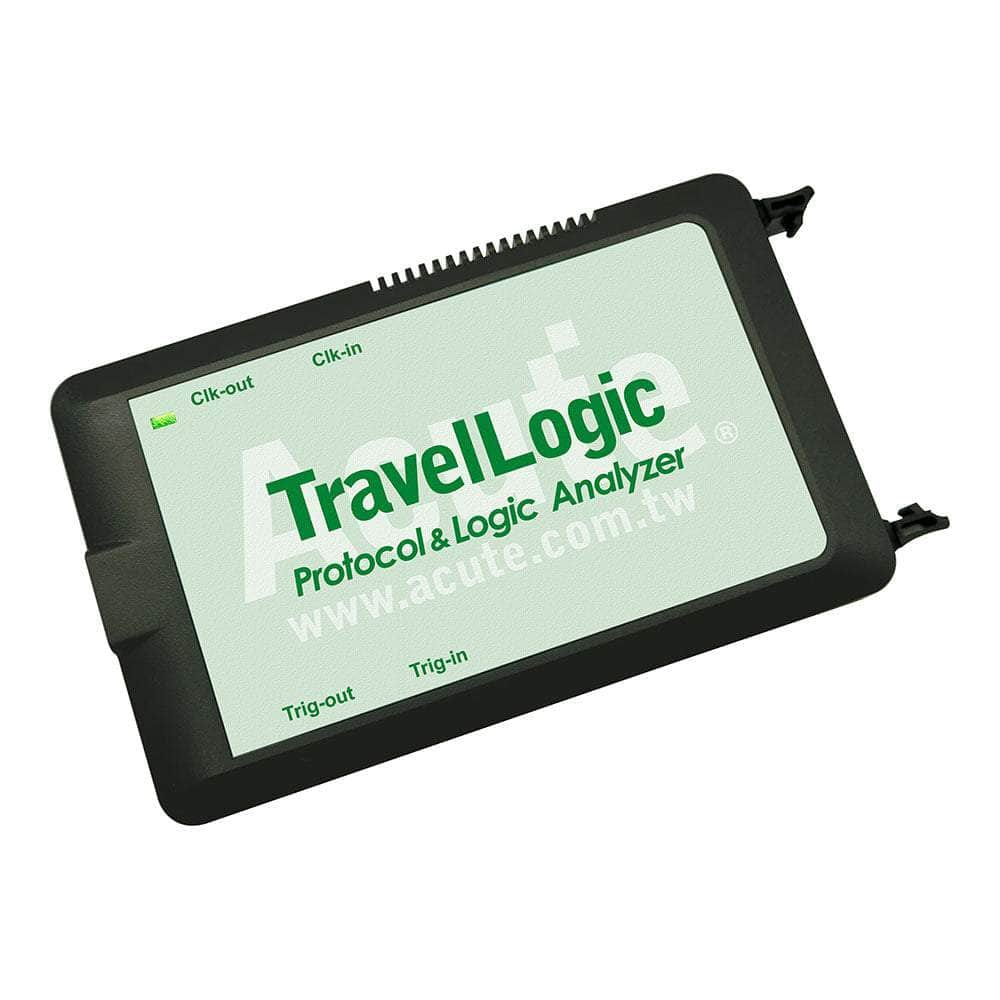
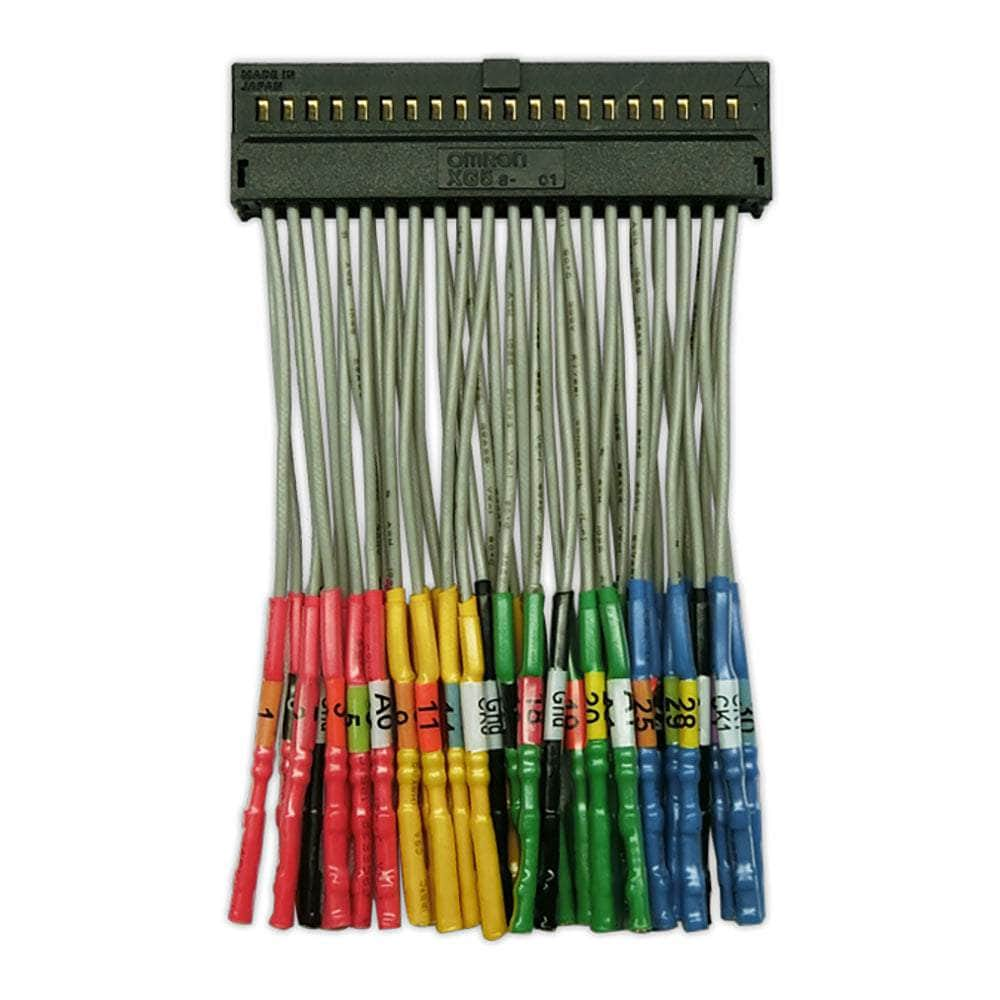
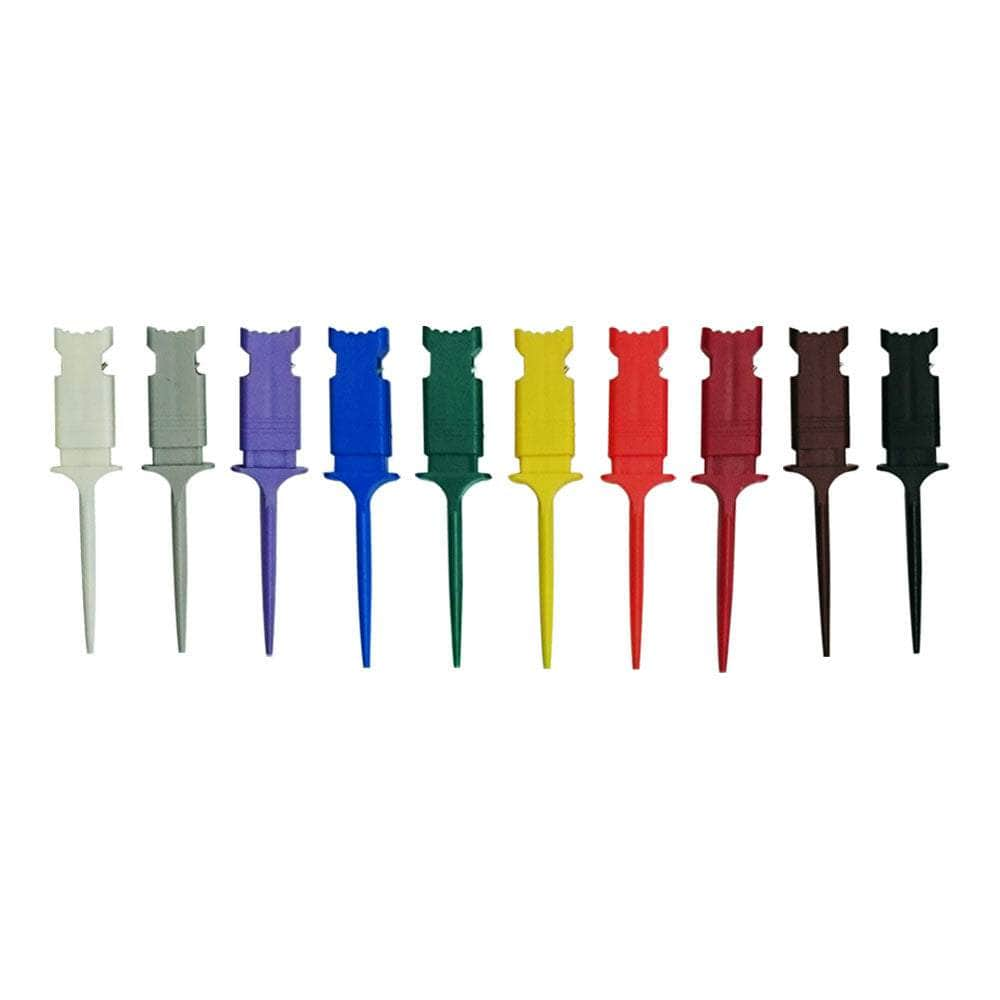
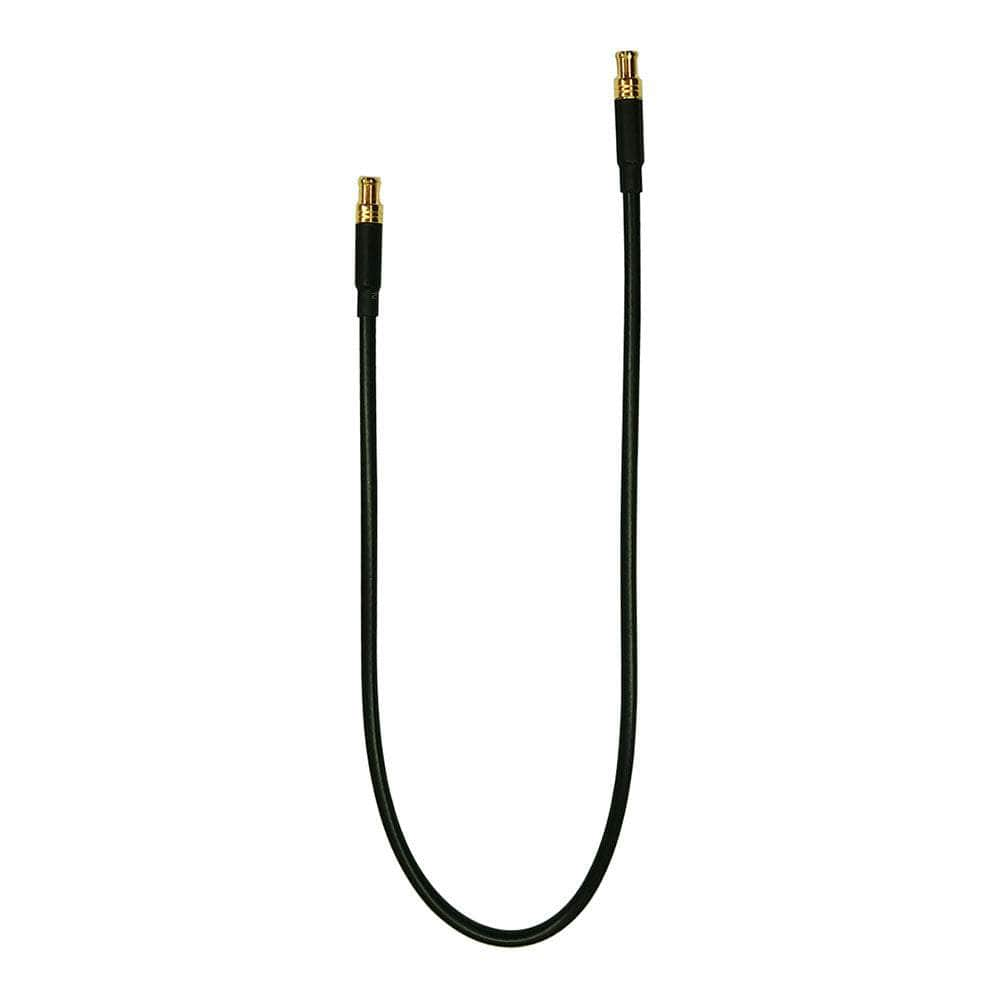
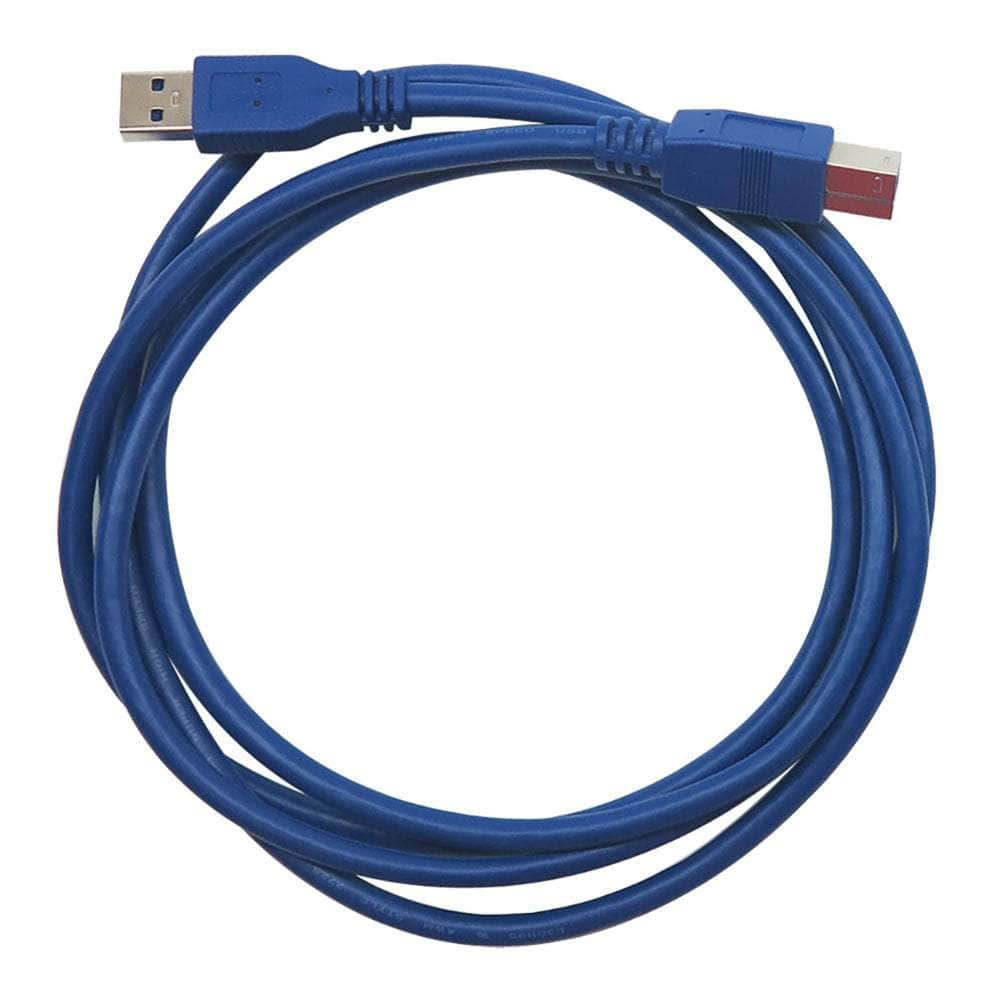
Key Features
Overview
Unleash Your Design Potential with the TravelLogic Logic Analyser
Are you an electronic design engineer looking to debug and optimize your latest creations? The Acute Technology TravelLogic Logic Analyser is the ultimate tool to take your designs to the next level.
Blazing Fast Performance
With a lightning-fast sample rate of 2 GHz across 34 digital channels, TravelLogic captures every intricacy of your high-speed signals. Its memory depth lets you record signal behaviour over long periods to gain valuable insights.
Intuitive Software and Setup
The TravelLogic integrates seamlessly with your workflow through its intuitive PC-based software. Setting up triggers, decoding buses, and analyzing data is straightforward with a user-friendly interface - the USB 3.0 connectivity offers true plug-and-play functionality.Comprehensive Debugging Capabilities
This logic analyzer can decode over 100 serial protocols, including I2C, SPI, CAN, and automotive buses. With advanced triggering on bus events, you can zero in on communication errors and signal anomalies quickly.
Flexible Analog Inputs
The two analogue inputs let you correlate digital signals with analogue waveforms for a complete system view. You can even stack the TravelLogic with an oscilloscope to create a mixed signal debugging station.
Robust Design for Demanding Environments
The compact TravelLogic withstands vibration, shock, and extreme temperatures from lab benches to field testing. Its rugged construction and small form factor make it perfect for portable troubleshooting. Take your designs to the next level with the Acute Technology TravelLogic Logic Analyser. Request a demo unit today to experience its unmatched performance and usability.Downloads
Entfesseln Sie Ihr Designpotenzial mit dem TravelLogic Logic Analyser
Sind Sie ein Elektronik-Designingenieur, der seine neuesten Kreationen debuggen und optimieren möchte? Der Acute Technology TravelLogic Logic Analyser ist das ultimative Tool, um Ihre Designs auf die nächste Ebene zu bringen.
Blitzschnelle Leistung
Mit einer blitzschnellen Abtastrate von 2 GHz über 34 digitale Kanäle erfasst TravelLogic jede Feinheit Ihrer Hochgeschwindigkeitssignale. Dank seiner Speichertiefe können Sie das Signalverhalten über lange Zeiträume aufzeichnen und so wertvolle Erkenntnisse gewinnen.
Intuitive Software und Einrichtung
TravelLogic lässt sich dank seiner intuitiven PC-basierten Software nahtlos in Ihren Arbeitsablauf integrieren. Das Einrichten von Triggern, Dekodieren von Bussen und Analysieren von Daten ist dank einer benutzerfreundlichen Oberfläche ganz einfach – die USB 3.0-Konnektivität bietet echte Plug-and-Play-Funktionalität.Umfassende Debugging-Funktionen
Dieser Logikanalysator kann über 100 serielle Protokolle dekodieren, darunter I2C, SPI, CAN und Automobilbusse. Mit der erweiterten Triggerung von Busereignissen können Sie Kommunikationsfehler und Signalanomalien schnell erkennen.
Flexible Analogeingänge
Die beiden analogen Eingänge ermöglichen Ihnen die Korrelation digitaler Signale mit analogen Wellenformen für eine vollständige Systemansicht. Sie können TravelLogic sogar mit einem Oszilloskop kombinieren, um eine Mixed-Signal-Debugging-Station zu erstellen.
Robustes Design für anspruchsvolle Umgebungen
Das kompakte TravelLogic widersteht Vibrationen, Stößen und extremen Temperaturen im Labor und bei Feldtests. Seine robuste Konstruktion und sein kleiner Formfaktor machen es perfekt für die mobile Fehlersuche. Bringen Sie Ihre Designs mit dem Acute Technology TravelLogic Logic Analyser auf die nächste Ebene. Fordern Sie noch heute eine Demoeinheit an, um seine unübertroffene Leistung und Benutzerfreundlichkeit zu erleben.| General Information | |
|---|---|
Part Number (SKU) |
TL4134E
|
Manufacturer |
|
| Physical and Mechanical | |
Weight |
0.5 kg
|
| Other | |
Warranty |
|
HS Code Customs Tariff code
|
|
EAN |
5055383616404
|
Frequently Asked Questions
Have a Question?
-
How does the TravelLogic address signal integrity requirements?
The TravelLogic incorporates 200kΩ input impedance with <7pF loading, minimising circuit impact during measurement. Its ±30V DC maximum input voltage tolerance protects against accidental overvoltage whilst supporting diverse logic families. The adjustable threshold levels (±5V range with 50mV resolution) accommodate TTL, CMOS, and LVTTL signals accurately. The 0.25Vpp input sensitivity at 50MHz ensures reliable capture of low-amplitude signals common in modern low-power designs. These specifications exceed many competitors whilst maintaining the compact form factor.
-
What software features enhance the debugging workflow?
The TravelLogic software includes simultaneous logic analyser and protocol analyser modes with real-time protocol data display. The protocol logging mode saves massive datasets to SSD drives for extended analysis, whilst protocol monitor mode captures trigger events over extended periods like automotive dash cameras. The software's search and filter functions with data statistics accelerate fault isolation. Waveform annotation capabilities and bitmap/text export functions support collaborative debugging and documentation requirements essential for design review processes.
-
Can TravelLogic integrate with existing test equipment?
Yes, the TravelLogic excels in heterogeneous test environments. It stacks seamlessly with oscilloscopes from Keysight, R&S, Tektronix, and other manufacturers via standard MCX connections, creating powerful mixed-signal analysis stations. The open protocol interface allows custom decoder development through Dynamic Link Libraries (DLLs), enabling proprietary protocol support. This integration capability contrasts with expensive proprietary ecosystems that lock users into single-vendor solutions, providing flexibility and protecting existing equipment investments.
-
What triggering capabilities does TravelLogic offer for complex debugging?
The TravelLogic provides advanced multi-level triggering with up to 16 trigger states and flow chart bus triggers for sophisticated protocol analysis. Its 8-state flow chart triggering with counter/timer functionality enables complex sequence detection crucial for debugging intermittent protocol issues. The system supports pattern, edge, width, and timeout triggers with pass counter functionality allowing specific event occurrence capture. Unlike basic analysers with simple pattern triggers, the TravelLogic's hierarchical triggering enables isolation of complex system interactions and protocol violations that cause real-world failures.
-
How does the TravelLogic's portability compare to traditional logic analysers?
The TravelLogic revolutionises portable debugging with its USB 3.0 bus-powered operation requiring no external power supplies. Weighing approximately 200g, it fits easily into a shirt pocket whilst traditional analysers weigh 10-30kg and require dedicated transport cases. The plug-and-play connectivity eliminates complex setup procedures, enabling rapid deployment across multiple test locations. This portability advantage becomes critical for field service applications, customer site debugging, and multi-location development teams where traditional analysers are impractical.
-
What are the memory capabilities, and how do they benefit debugging?
The TravelLogic features up to 8GB internal memory with innovative memory allocation. Unlike fixed-allocation systems, it dynamically distributes memory based on active channels and sample rates. At 2GHz, 8 channels provide 512Mb per channel, whilst at lower speeds, all 34 channels can utilise the full memory depth. The system's PC RAM streaming mode enables unlimited capture duration for protocol logging applications. This flexible memory architecture allows engineers to optimise between channel count and capture depth based on specific debugging requirements, a significant advantage over rigid competitor architectures.
-
Can the TravelLogic handle high-speed signals effectively?
Absolutely. The TravelLogic operates at 2GHz timing analysis with 250MHz state analysis, providing excellent performance for high-speed digital designs. Its sub-1ns channel-to-channel skew ensures accurate timing relationships crucial for debugging setup and hold violations. The analyser's 500ps trigger resolution enables precise capture of glitches and timing anomalies that slower systems miss. Unlike budget analysers limited to basic timing capture, the TravelLogic maintains timing accuracy across all 34 channels simultaneously, essential for modern multi-lane serial protocols and high-speed memory interfaces.
-
How many protocols can the TravelLogic decode and analyse?
The TravelLogic supports over 100 protocol decoders, making it one of the most comprehensive analysers available. The system includes three tiers of protocol support: Bus Trigger I covers essential protocols like I²C, SPI, UART, CAN 2.0B/CAN FD, and USB PD 3.0. Bus Trigger II extends to specialised protocols including DALI, LPC, PMBus, and SMBus. The premium Bus Trigger III handles advanced protocols such as eMMC 4.5, eSPI, MIPI SPMI 2.0, and SD 3.0. This extensive protocol library eliminates the need for multiple specialised analysers, significantly reducing equipment costs whilst providing comprehensive debugging capability for modern embedded systems.
-
What makes the TravelLogic unique compared to competitor logic analysers?
The Acute Technology TravelLogic offers distinctive advantages over premium competitors. Unlike expensive Keysight and Tektronix solutions costing £15,000-£50,000+, the TravelLogic delivers professional-grade performance at a fraction of the cost whilst maintaining superior portability. Its transitional storage technology prevents software lag during long captures—a critical advantage over compressed storage systems that can freeze during decompression. The TravelLogic's pocket-sized form factor (123×76×21mm) allows true field deployment, whilst heavyweight competitors require dedicated lab space. Additionally, its stacking capability with oscilloscopes from multiple manufacturers (including Keysight, R&S, and Tektronix) creates cost-effective mixed-signal analysis without expensive proprietary solutions.

